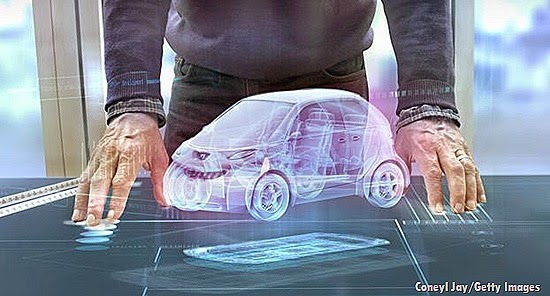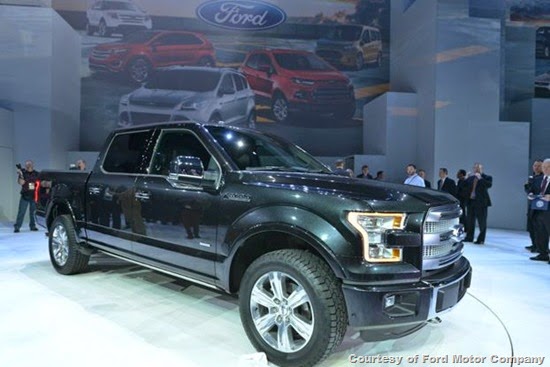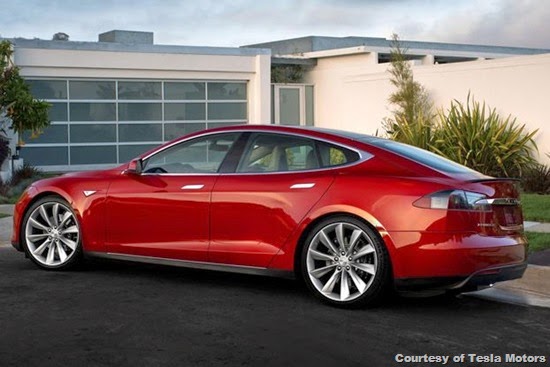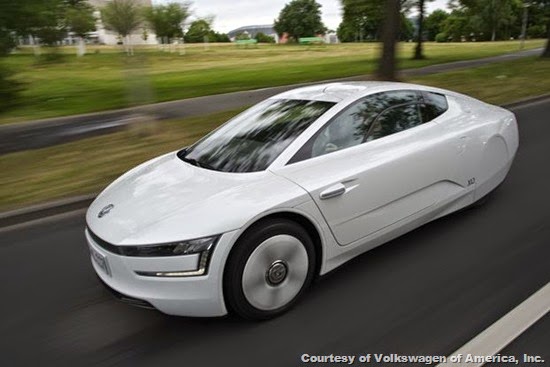
The days of traditional car repair aren't totally behind us quite yet, but they're on their way. And while there might always be a place for a small, old-school mechanic's shop to work on older cars, it's unlikely that service stations and low-volume car dealerships can keep up. Automotive repair is getting a bit less greasy and a bit more geeky, as tablet computers become the most valuable tools on a technician's workbench. Techniques might be getting more advanced, but it's absolutely necessary to keep up with the way cars are designed and built. New technology might make diagnosis and repair faster; however, that doesn't mean it'll necessarily be any cheaper for consumers. Repair shops have to invest a lot of money to stay certified (and therefore competitive) and those costs have to get passed along somehow - but what does all this mean for the average car owner? Let's take a look at some up-and-coming car repair tools and techniques.
5. Cheap Do-It-Yourself Computers
Raspberry Pi is a good example of an inexpensive, tiny, custom computer that the DIY crowd could use
to track data or record performance statistics. The possibilities are infinite.
to track data or record performance statistics. The possibilities are infinite.
The Raspberry Pi has become a favourite new toy of the do-it-yourself crowd. It's a small computer that costs about 35 bucks and was designed to teach kids how to program. The upsides are that it's cheap and versatile. The downside (for some, anyway) is that to do anything with a Raspberry Pi, it has to be programmed. Of course, those with intrepid or self-sufficient spirits can think of tons of ways to use a tiny, custom computer in a car, like tracking diagnostic data and performance statistics for more efficient DIY repairs and upgrades. Hooking up a computer to run a car's diagnostics isn't a new idea; back in the good old days, people did it with laptops. So, compared to some of the new technology that comes later in this list, DIY computing isn't exactly mind-blowing. But it does have its merits. It's the accessible price point and customizing power, wrapped up in a bite-size package, that give today's computers staying power for the long haul. Raspberry Pi, and other products similar to it, are like blank slates, so there are infinite possibilities to help the automotive community grow and evolve.
4. New Auto Body Techniques
The all-new 2015 Ford F-150 has a high-strength, military-grade, aluminium alloy body.
New technology, particularly the way cars' construction is evolving, means that auto repair shops need to update their techniques and equipment. A specific area of concern is the increased use of aluminium in car design. Aluminium body panels were once a privilege reserved mainly for high-end performance cars; but that's expected to change, and more manufacturers, such as Ford, are rumoured to be designing all-new aluminium-bodied vehicles [source: Wernle]. That's mostly because the material is lightweight and strong, which helps cars meet federal fuel economy and safety regulations. But experienced technicians are accustomed to working on steel cars, and aluminium requires a totally new strategy. Banged-up aluminium body panels usually can't be reshaped like their steel counterparts can; the panel typically needs to be replaced, which requires aluminium-specific riveting tools and welding equipment. These changes might increase the cost of auto body repair, but there are some upsides. As cars get stronger and smarter, experts expect that they'll last longer, too. Also, new safety technology, like backup cameras and collision warning systems, means that crashes should become less frequent and less serious.
3. Wireless Data Transmission
The software within the Tesla Model S can be updated wirelessly (from home), similar to a smartphone
or a computer.
or a computer.
As cars become rolling Wi-Fi hotspots, manufacturers have found some practical ways to use this technology. Wireless software updates correct running problems, improve fuel mileage and address other performance or safety issues. Sometimes, dealerships update software during regular vehicle service. In more important situations, such as an early 2014 problem with the anti-lock brakes in a couple million Toyotas, a recall ensures updates are completed in a timely manner. Tesla Motors made waves with its Model S electric car, which can be updated wirelessly from home, similar to a smartphone or a computer, and so far, it seems to be working pretty well. Of course, Tesla is also known for bucking the traditional dealership model, so the company doesn't need to worry about angry dealer franchisees - if cars don't need to come in for recalls, there's less opportunity to upsell and get revenue, some dealers say. Security is also a concern, because anything that's wireless has the potential to be hacked or tampered with. It's no secret that the big, mainstream automakers aren't willing to take as many risks as Tesla, but if the wireless data transmission strategy proves to be reliable, it may soon become a lot more common.
2. Augmented Reality
Volkswagen will introduce an augmented reality interface called MARTA for its upcoming VW XL1 - an
all-new, fuel-efficient, aerodynamic production car which features an intricate diesel-hybrid drivetrain.
all-new, fuel-efficient, aerodynamic production car which features an intricate diesel-hybrid drivetrain.
New cars feature complicated and sometimes dangerous (to service technicians) electronic or hybrid drivetrains, increasingly detailed computerized components, upgraded safety systems to meet new federal regulations, and a labyrinth of sensors everywhere that control practically everything. These expensive components are already changing how cars are repaired. But even more changes are on the horizon. Soon, augmented reality might mean that auto technicians might sport Google Glass headsets that feed visual information about the car to a computer that guides the mechanic through the process, and an app program that can help the technician visualize areas that are out of view or out of reach. Volkswagen was among the first manufacturers to float the idea of such technology, and introduced an interface called MARTA for the upcoming VW XL1, which features an intricate diesel-hybrid drivetrain [source: Okulski]. MARTA (Mobile Augmented Reality Technical Assistance) can save technicians valuable time learning the ins and outs of an unusual vehicle, and, Volkswagen hopes, may even improve safety on the job. Researchers say that someday, augmented reality apps might be written for consumers to use for repairs on-the-go, paired with smartphone cameras. Future versions of augmented reality technology might even replace the traditional paper owner's manual booklet [source: Stewart].
1. 3-D Printing
The Urbee is a full-size, street-legal car - and its entire body is 3-D printed.
True, 3-D printing already exists, but a lot of its potential is still untapped. In short, 3-D printing uses computers and other computerized components to recreate an existing object, or create an all-new custom object of the user's design. This could be especially useful to repair older cars with hard-to-find or non-existent parts supply - just take out the thing that broke, scan it and spit out a new one. Though classic car enthusiast Jay Leno talked about using such techniques back in 2009, it's still out of reach for most people. Most high-quality 3-D systems are still very expensive, large and tricky to use. In other words, industrial-strength 3-D printing has come a long way, with car manufacturers using the technology to create prototype parts, and insurance companies considering ways to recreate entire classic cars; however, average consumers and hobbyists still have a while to wait until reliable systems are affordable, and affordable systems are reliable. Making toys and trinkets with an at-home 3-D printer is one thing, but the stakes are a bit higher if you're printing a set of brake calipers.
Author's Note: I get positively giddy whenever I spot a new article by Seth Stevenson. I'd reproduce him if I could, and keep a copy for myself, but the technology isn't ready yet. So when I saw his Slate piece this winter, about his experiments in 3-D printing, I was pretty sure it would be good. "Wired" magazine has been pushing the 3-D printing agenda pretty hard, and although Seth's as good a storyteller as anyone who writes for "Wired," that seems (at least in part) because his exploits usually don't go that smoothly. For example, molten plastic, like the kind that flows from the consumer-grade Solidoodle 3-D desktop printer, is supposed to be smooth, but not in Seth's hands. After three failed attempts, he gave up. The article is worth a read, though, because these are the scenarios I envision playing out in the hands of amateurs, no matter what "Wired" wants me to believe. I know plastic thread, like the kind used for the printer in the article, won't ever be capable of heavy-duty car parts. But I think the technology, in general, is a little behind what we're told.
Related Articles:
Article Sources:
1. Bullis, Kevin. "Why Your Car Won't Get Remote Software Updates Anytime Soon." MIT Technology Review. Feb. 20, 2014. (Aug. 8, 2014)
2. Carney, Dan. "3D Printing Can Now Re-create An Entire Classic Car." Popular Mechanics. June 10, 2013. (Aug. 8, 2014)
3. Dearborn Group Technology. "Dearborn Group Technology's Wireless Diagnostics System." (Aug. 8, 2014)
4. Halzack, Sarah. "How innovation has changed the job of an auto repair technician." The Washington Post. May 26, 2013. (Aug. 8, 2014)
5. Okulski, Travis. "Augmented Reality App Will Help VW Techs Fix Your Car Correctly." Jalopnik. Oct. 1, 2013. (Aug. 8, 2014)
6. Sorokanich, Robert. "Raspberry Pi on Wheels: The $35 Computer in the Car." Popular Mechanics. April 25, 2013. (Aug. 8, 2014)
7. Stevenson, Seth. "A Factory in Every Foyer." Slate. March 9, 2014. (Aug. 14, 2014)
8. Stewart, Jack. "How to fix a car - without a mechanic." BBC. Jan. 20, 2014. (Aug. 8, 2014)
9. Stratasys. "3D Printing for Automotive Parts Manufacturing." (Aug. 8, 2014)
10. Yahoo Finance. "Connected Cars, New Materials To Radically Change Collision Repair, Auto Leaders Tell I-CAR Conference." July 30, 2014. (Aug. 12, 2014)
11. Wernle, Bradford. "Group 1 body shops prep for the age of aluminium." Automotive News. Dec. 2, 2013. (Aug. 12, 2014)
Top image: It's possible that augmented reality apps might someday allow consumers to use their own smartphone for auto repairs on-the-go. Credit: Coneyl Jay/Getty Images.





No comments:
Post a Comment
Please adhere to proper blog etiquette when posting your comments. This blog owner will exercise his absolution discretion in allowing or rejecting any comments that are deemed seditious, defamatory, libelous, racist, vulgar, insulting, and other remarks that exhibit similar characteristics. If you insist on using anonymous comments, please write your name or other IDs at the end of your message.